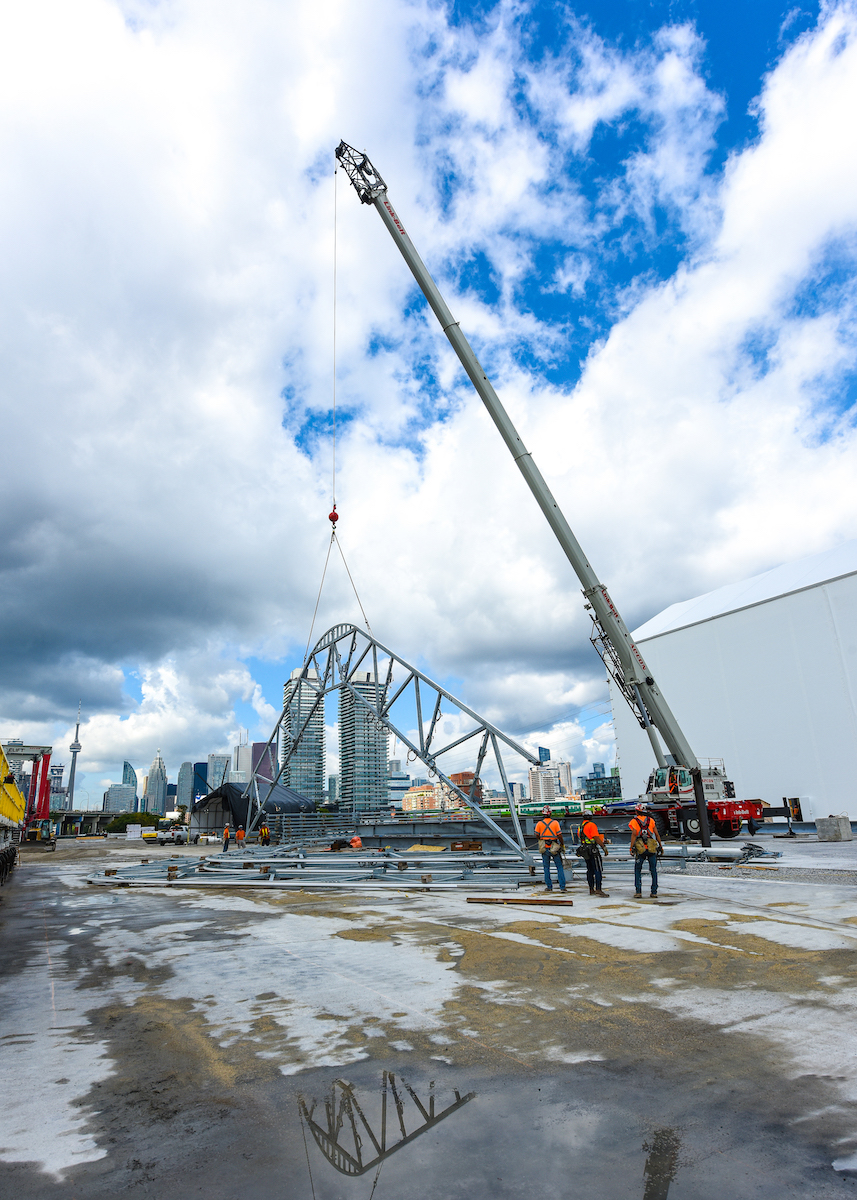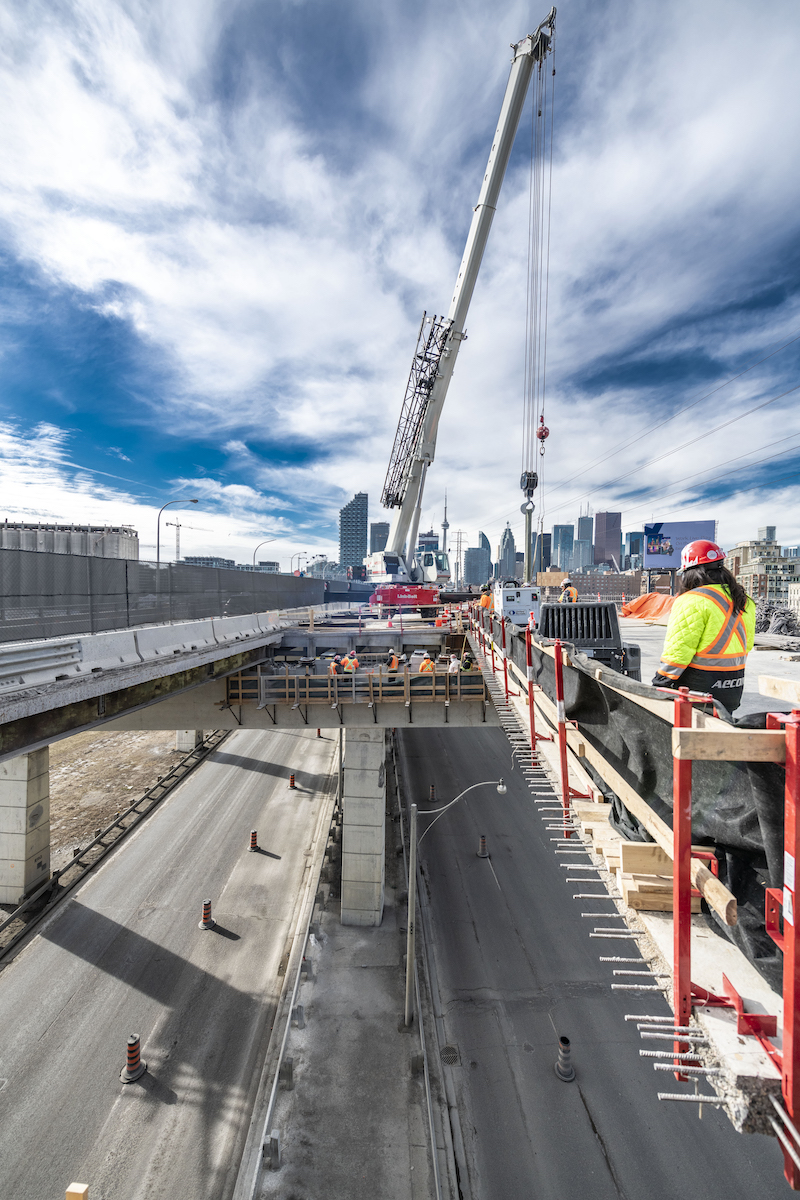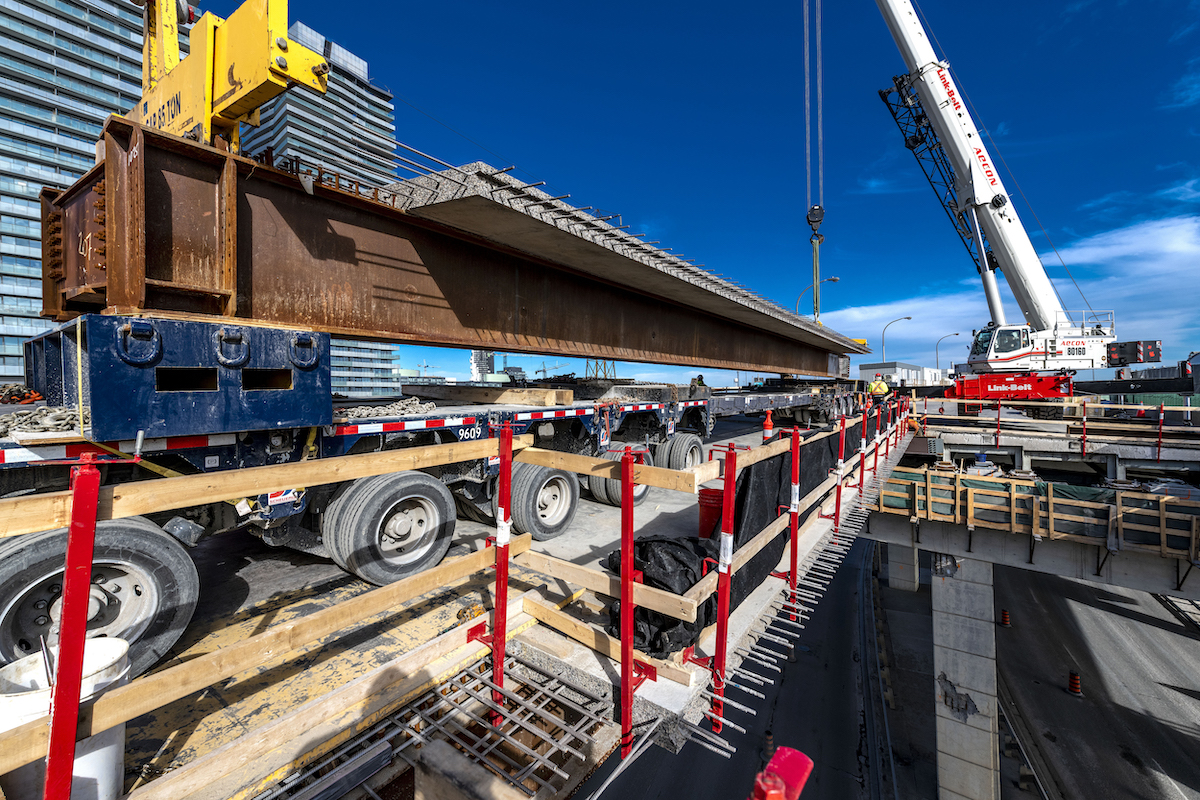Link-Belt duo working on Canadian expressway
12 August 2020Two 145t Link-Belt RTC-80160 Series II rough terrain cranes are being used for the restoration of an expressway in Toronto, Canada.
The 18.0km Frederick G. Gardiner Expressway runs alongside Lake Ontario. The City of Toronto plans to revitalise the 62-year-old expressway in multiple phases. The contractor for the first phase of the project is using bridge building methods (like pre-fabrication) to accelerate construction and lessen noise and environmental impact.
Phase 1 includes complete replacement of steel girders and concrete for existing on-ramps and road decking between Lower Jarvis and Cherry Streets. Poured-in-place deck panels are built on-site east of Cherry Street in quality and climate controlled canopies. Approximately 400 sections of deck panel will be constructed and lifted into place, and the Link-Belt rough terrain cranes are part of the fleet performing the rehabilitation.
The two Link-Belt rough terrains lift and remove existing steel and concrete expressway deck sections and replace with new fabricated deck panels weighing between 50t-110t and span 20m–42m.
“We chose the RTC-80160s because of their agility and ability to turn under a small footprint. They are very easy to maneuver into place and are easy to setup. I also like where they put the counterweights. It’s very compact,” said a site superintendent on the project.
Crews will work 24/7 to accelerate the project and reduce the length of construction. In just eight months the contractor has logged 1,200 hours on both RTC-80160 Series II.
“The cranes have handled the transitions and elevation changes very well. They are sturdy, and the sight lines are exceptional for early morning and overnight work,” said the crane operator.


